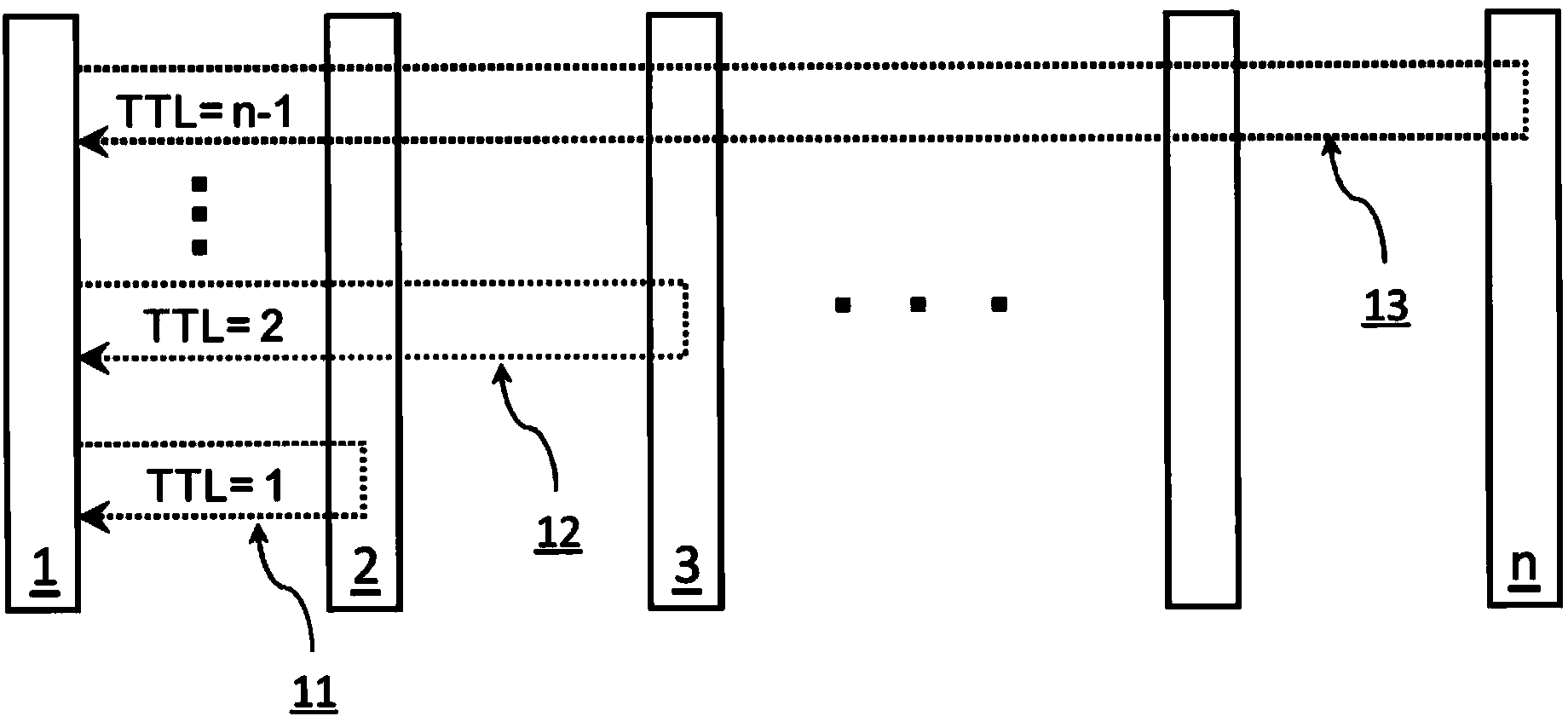Traceroute_delay diagnostic command
A technology for network path and message detection, applied in the direction of digital transmission system, electrical components, transmission system, etc., can solve the problem of not allowing to determine the delivery waiting time, end-to-end delay measurement tools not allowing operators to calculate, etc.
- Summary
- Abstract
- Description
- Claims
- Application Information
AI Technical Summary
Problems solved by technology
Method used
Image
Examples
Embodiment Construction
[0061] A diagnostic command denoted traceroute_delay() below is provided. This name is used for naming purposes only, and is equivalent to conventional traceroute() commands (for example, RFC1393) and latency measurement issues in general. Obviously, any other name can be given.
[0062] By controlling the probe message header, the traceroute_delay() command not only collects the address of the node it passes through, but also collects the residence time of the node it passes through and the propagation delay of the final link it passes through.
[0063] In one embodiment, the probe message is a modified ICMP message. In fact, the traceroute_delay() command makes use of ICMP timestamps, and some fields of ICMP timestamp reply messages (RFC972) differently from what is expected of them (providing new semantics to these existing fields).
[0064] refer to figure 1 and figure 2 , according to the traceroute_delay() command, the traditional ICMP timestamp and timestamp reply ...
PUM
 Login to View More
Login to View More Abstract
Description
Claims
Application Information
 Login to View More
Login to View More - R&D
- Intellectual Property
- Life Sciences
- Materials
- Tech Scout
- Unparalleled Data Quality
- Higher Quality Content
- 60% Fewer Hallucinations
Browse by: Latest US Patents, China's latest patents, Technical Efficacy Thesaurus, Application Domain, Technology Topic, Popular Technical Reports.
© 2025 PatSnap. All rights reserved.Legal|Privacy policy|Modern Slavery Act Transparency Statement|Sitemap|About US| Contact US: help@patsnap.com



